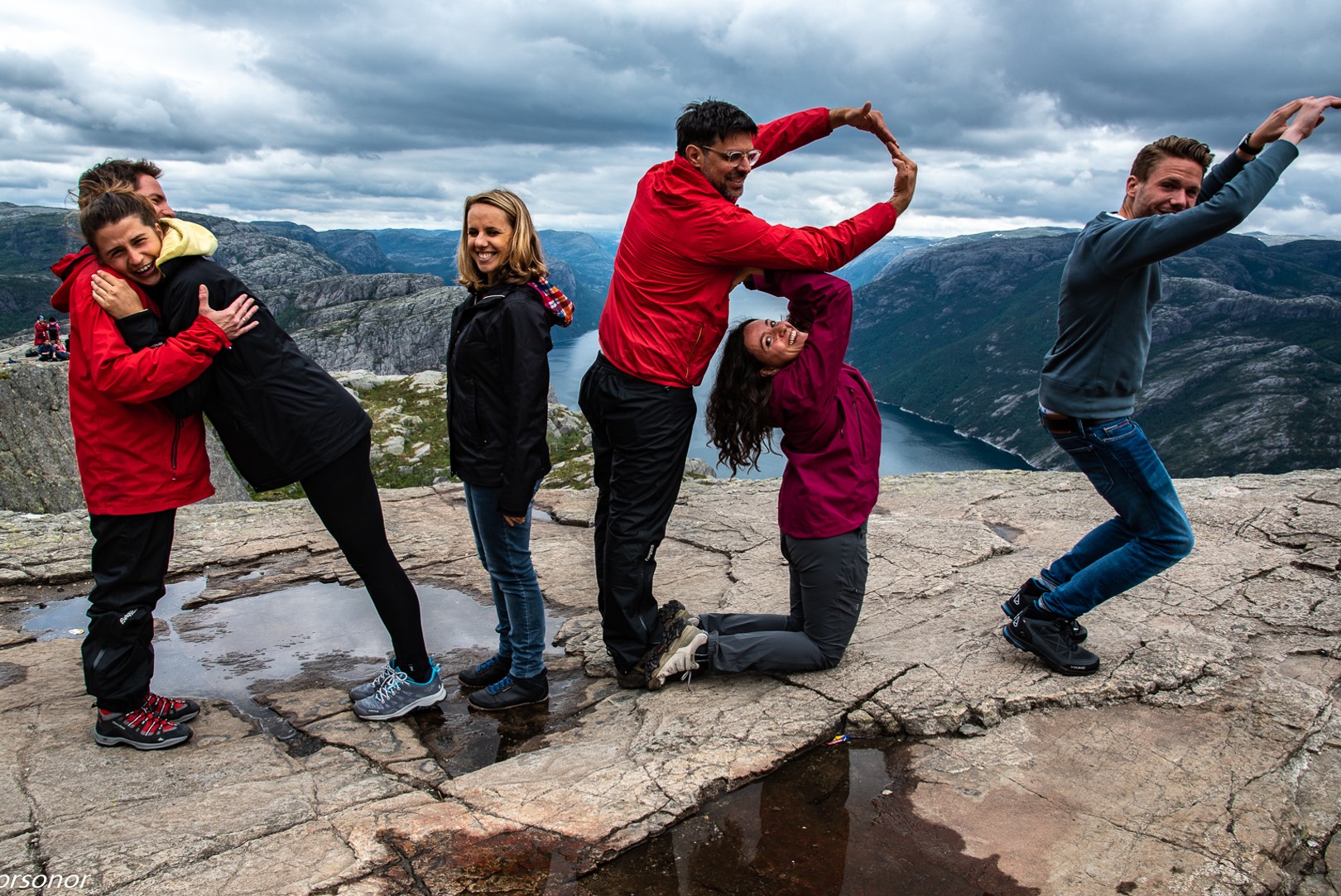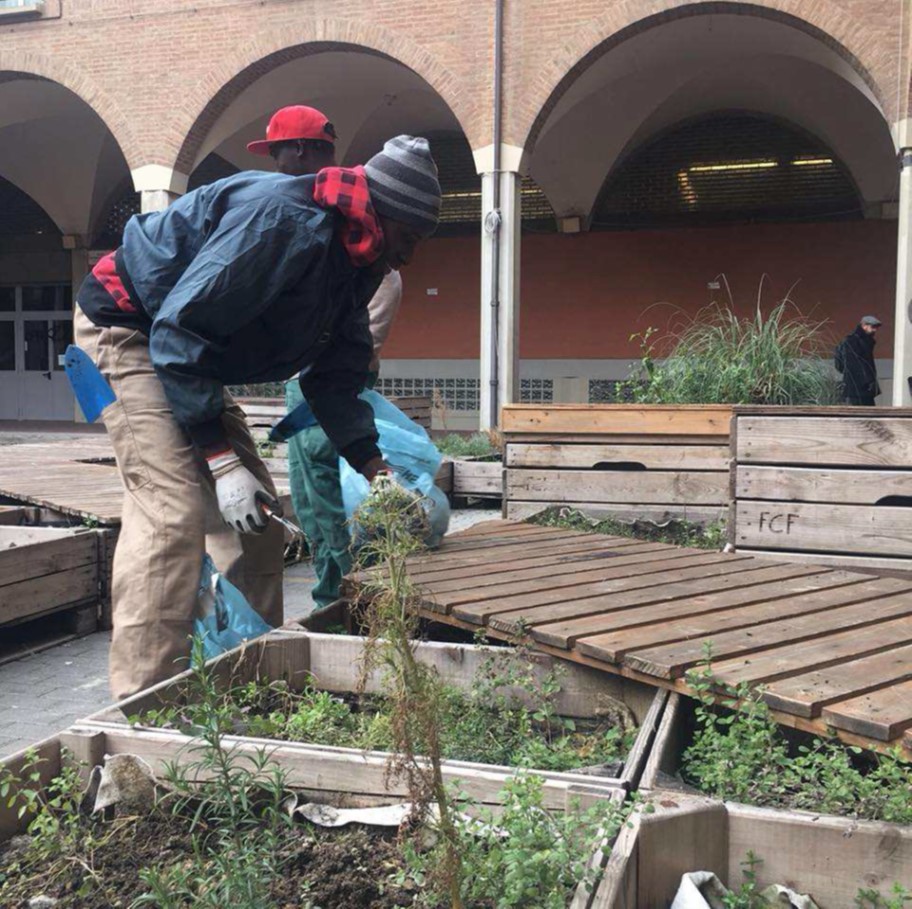How to design and co-create greener cities?
Edited on
21 June 2019Chantal van Ham, European Programme Manager Nature Based Solutions and Katharina Dropmann of International Union for Conservation of Nature Brussels European Regional Office share their enthusiasm for the EU Horizon 2020 project GrowGreen and nature based solutions as seen at URBACT City Festival, through examples from Bologna (IT), Manchester (UK) and Stavanger (NO)

Building cities may be humans’ greatest achievement, but at the same time they pose great threats for the future of the planet. For hundreds of years, people have called cities their home. Settlers started to make use of land alongside of rivers, in coastal areas and on fertile soil, providing increasing prosperity and wealth. Cities became the centre of commerce, culture and livelihood. Today, we depend on these complex systems.
Cities are an essential platform for communication, interaction, creativity and innovation, however, the relation between humankind and cities has always been a double-edged sword. As a result of industrialisation, the overexploitation of natural resources and unsustainable land use, cities face rising temperature and sea levels, natural disasters and extreme levels of pollution. Cities consume more than half of the world’s energy and cause over 70% of global anthropogenic greenhouse gas emissions. At this critical crossroads, it is essential to benefit from the creative and innovative power of cities in responding to these challenges and exploring the value of nature as a part of the solution in combatting climate change and its impacts.
Not only vital for the world’s major capital cities, it is also vital for small and medium-sized cities, to have a platform for exchange, as they are equally important in creating sustainable change: “think global, act local”. The URBACT City Festival gave cities a unique chance to be in the limelight and exchange experiences. On the 13th of September 2018, Bologna (IT), Manchester (UK) and Stavanger (NO) presented their approaches to using the ground-breaking concept of nature-based solutions to respond to a range of challenges in their cities, and to meet national, as well as global sustainable development goals. These cities understand that nature-based solutions adapted to their unique local context, are highly valuable in fighting climate change impacts and improving quality of life for their citizens.
Introducing nature-based solutions
Many cities are already active in improving their green footprint and creating a more sustainable attitude for future development by cutting emissions, using renewable energy and reducing pollution. However, we need to think further. Now, more than ever, there is a need to reconnect with and integrate nature in the urban fabric. Nature-based solutions are actions to protect, manage, and restore natural or modified ecosystems that aim to support addressing society’s challenges in sustainable ways. Nature-based solutions are a new and largely untapped opportunity for cities to obtain not only ecological but also social, economic and health benefits. By delivering multiple co-benefits through enhanced ecosystem services, such as air and water quality and biodiversity, climate mitigation and adaptation, jobs and economic opportunities, nature-based solutions are crucial to increase the quality of life in urban areas.
Bologna – how to combine cultural heritage with today’s most pressing environmental challenges
 In Roman cities, the sense of dense urbanity is distinctive. Winding alleys, towers and especially archways characterise Bologna and reveal its great history. In the face of increasing water scarcity, extreme weather events like heat waves and heavy rainfall in urban areas, Bologna is an outstanding example of a city that is able to protect its cultural heritage while adapting to climate change by implementing highly innovative solutions. Bologna is a coordinator city of the EU Urban Partnership on Sustainable Land Use and Nature Based Solutions and strives to promote nature-based solutions as a tool for building sustainable and liveable urban areas. The Bologna Local Urban Environment Adaptation Plan (BLUEAP) was developed as a template to identify vulnerabilities related to climate change and to design a scalable information system about the risks of climate change. This EU Life+ Project can be considered a good practice for results achieved and the methodology used can be useful for other cities.
In Roman cities, the sense of dense urbanity is distinctive. Winding alleys, towers and especially archways characterise Bologna and reveal its great history. In the face of increasing water scarcity, extreme weather events like heat waves and heavy rainfall in urban areas, Bologna is an outstanding example of a city that is able to protect its cultural heritage while adapting to climate change by implementing highly innovative solutions. Bologna is a coordinator city of the EU Urban Partnership on Sustainable Land Use and Nature Based Solutions and strives to promote nature-based solutions as a tool for building sustainable and liveable urban areas. The Bologna Local Urban Environment Adaptation Plan (BLUEAP) was developed as a template to identify vulnerabilities related to climate change and to design a scalable information system about the risks of climate change. This EU Life+ Project can be considered a good practice for results achieved and the methodology used can be useful for other cities.
The City of Bologna shaped different nature-based solutions pilot actions, which explore and test the concept of the Adaptation Plan and assesses their efficiency on a small scale. The EU Horizon 2020 project ROCK implements measures including a roof garden for the historical Opera House and “greening” the University’s Scaravilli square. The project considers historic city centres as extraordinary laboratories to demonstrate how cultural heritage can be a unique and powerful engine of regeneration, sustainable development and economic growth for the whole city.
Manchester - how to prevail naturally over flood risks
As one of the frontrunner cities of the EU Horizon 2020 project GrowGreen, Manchester focuses on tackling high surface water flood risks by increasing sustainability and business opportunities to create a healthy, liveable and climate resilient city. The project supports local partners and stakeholders to design and deliver a detailed green infrastructure masterplan for one of the neighbourhoods, West Gorton. To create green and blue spaces in urban areas with the overarching aim to manage water through water cycles and enhance the quality of life in the city, Manchester has developed several funding schemes and programmes. Since 2016, businesses and government in Greater Manchester promote green and blue Sustainable drainage solutions (SuDS) as an opportunity to manage wastewater more effectively and save costs. If implemented at a city wide level it not only improves mental and physical health, air quality and decreases surface flood risks, but it also offers direct financial savings, which can be re-invested. This successful concept can serve other European cities and sets an exceptional example to invest in nature for solving water management problems.
Stavanger – a green city that is leading the way

Stavanger, the fourth biggest and most densely populated city of Norway, is one of the nation’s leading oil industry cities and its Continuous Urban Green Structure is a true green miracle. As member of the EU Urban Agenda and thanks to a very strong leadership and dedicated network of planners and initiatives, Stavanger developed over a period of more than 50 years a continuous public green infrastructure throughout the whole city. Since 1965, several legally binding green infrastructure action plans were adopted, undergoing multiple stages of implementation with the vision to create a coherent green trail system across Norway supported by the Norwegian Trekking Association and the central government. Since then, Stavanger’s responsible communities have put a lot of effort into preserving green areas and constructing new trails.
Today, more than 99 % of the citizens have access to the green trails within 500 meters from their home. Stavanger’s green structure is based on sound knowledge of the relationship between green urban infrastructure, public health and the health of the urban environment at large. Secrets for its success are: a great vision, political determination and courage, as well as the ability to implement the plans. Stavanger’s next steps focus on targets and indicators for nature-based solutions and green infrastructure and to collaborate with other cities to invest in new solutions.
What could be easier than just helping nature in what it does best?
 Nature-based solutions present an innovative approach that respects the usability, multi-functionality and ecological benefits of green and blue spaces in urban areas. Through their integration in complex urban systems, we are one step closer to ensure human wellbeing and economic benefits to society. Nevertheless, there is still a long way to go – more cities need to develop and test new ways of integrating these solutions in their planning processes to improve strategies, spread ideas and build alliances for action. It is pivotal to attract public and private stakeholders to invest in nature-based solutions and to improve assessment methods for mapping ecosystem services to be able to make the business case. In order to attract more investors and raise financing to scale up the implementation of nature-based solutions, GrowGreen is organising a conference on innovative financing for creating greener cities in March 2019.
Nature-based solutions present an innovative approach that respects the usability, multi-functionality and ecological benefits of green and blue spaces in urban areas. Through their integration in complex urban systems, we are one step closer to ensure human wellbeing and economic benefits to society. Nevertheless, there is still a long way to go – more cities need to develop and test new ways of integrating these solutions in their planning processes to improve strategies, spread ideas and build alliances for action. It is pivotal to attract public and private stakeholders to invest in nature-based solutions and to improve assessment methods for mapping ecosystem services to be able to make the business case. In order to attract more investors and raise financing to scale up the implementation of nature-based solutions, GrowGreen is organising a conference on innovative financing for creating greener cities in March 2019.
Magda Kubecka, one of the trend spotters who actively followed the discussions at the URBACT City Festival to identify ground breaking ideas and solutions for the future concluded: “We need to deliver nature as part of everything we do in cities - it’s not a nice to have, it’s essential and crucial.” Nature-based solutions allow us to breathe fresh air, clear our heads and co-create greener more liveable cities. They benefit us all now and beyond, will benefit future generations.
Submitted by Chantal van Ham on




